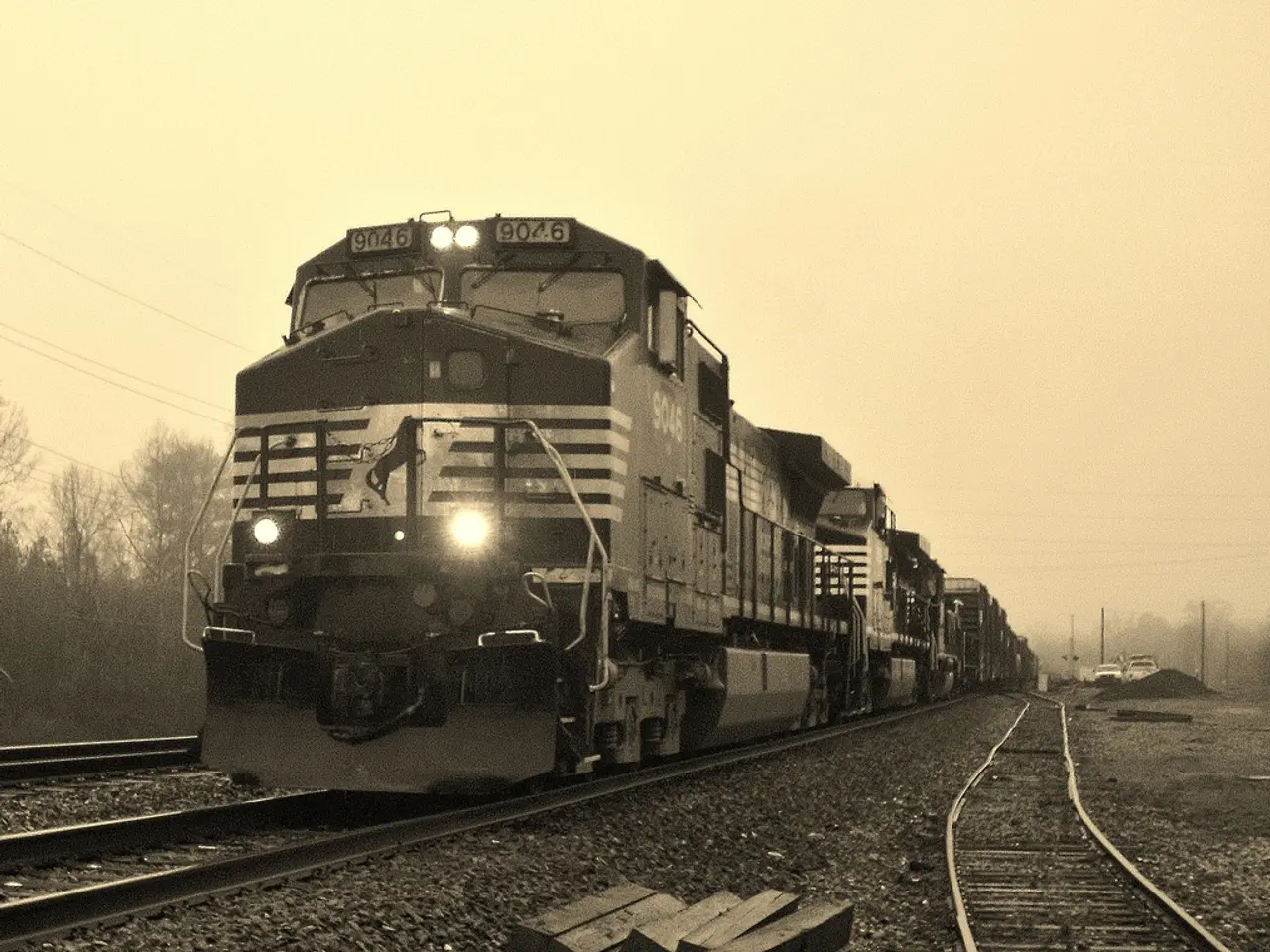"The Tren Maya's Director has acknowledged two past failings, emphasizing the importance of avoiding similar mishaps in the future; Federal Government's investigative body, FGR, is currently scrutinizing the project."
The Mayan Train, Mexico's flagship megaproject, experienced a partial derailment near Izamal station in Yucatán on August 19, 2025. The incident, which occurred due to an anomaly in the automated track switching system, resulted in a car of the train partially derailing and leaning onto a parallel parked train. Remarkably, no injuries were reported.
The malfunctioning of the automated track switch, which should not have occurred given the railway design standards, has raised concerns about accelerated construction, lack of sufficient operational testing, and potential structural or mechanical weaknesses in the system. The incident serves as a stark reminder of the challenges faced in the project's implementation, which has been marred by more than 60 workplace deaths during construction, multiple route changes, allegations of corruption, and significant environmental impact issues.
Senior officials have emphasised that safety protocols were activated properly, and the disruption was managed with alternative transportation provided to passengers. However, the exact cause of the incident is still under investigation, with the motor switch that was activated from the control center being put in the direct position.
The Attorney General of the Republic (AGR) has announced that an investigation will be opened regarding the incident. Óscar David Lozano, the general director of the Mayan Train, has stated that if there are responsible parties for the incident, they will face the authority. The commitment of the Mayan Train, National Defense, and the Government of Mexico is to ensure zero incidents on passenger trains.
Comparatively, the Mayan Train incident contrasts with many severe international rail accidents by the lack of casualties and scale. Many rail accidents globally are often linked to human error, maintenance failures, infrastructure aging, or excessive speed. The Maya Train incident highlights risks from hasty construction and insufficient testing in new large-scale projects, which can be more common in developing megaprojects with accelerated timelines.
In developed countries, major rail networks typically have extensive safety testing and oversight; the Maya Train’s expedited rollout and military operation add layers of operational risk uncommon in civilian-run railways elsewhere. The Mayan Train is aiming for quality certification to address these concerns and ensure the safety of passengers.
The Mayan Train has experienced two incidents so far, but it's important to note that unlike more severe international rail accidents, the Maya Train incident was a minor partial derailment with no injuries. The incident was ruled out to be a hacking of the security system or a "human error".
While no rail accidents have been registered in other areas of the world on the same day, it's worth mentioning that in the United States, there were more than 1,600 cases of derailments in unspecified years. In Spain, the number of rail accidents in the year 2022 was 175.
In conclusion, the Maya Train incident was caused by a misaligned automated track switch amid broader systemic issues tied to rapid project implementation and incomplete safety testing. It serves as a cautionary tale for ambitious infrastructure projects worldwide, emphasising the importance of thorough testing, safety protocols, and adherence to design standards to ensure the safety of passengers.
Read also:
- Stone mining has transformed the once renowned 'Sada Pathor' into a desolate, post-apocalyptic landscape.
- The Developmental Journey of Digital Supply Chains
- In the Heart of Soho, Manhattan, a New Brewery Emerges Underground
- Financial regulatory body OCC imposes Anti-Money Laundering (AML) disciplinary action against Wells Fargo.








